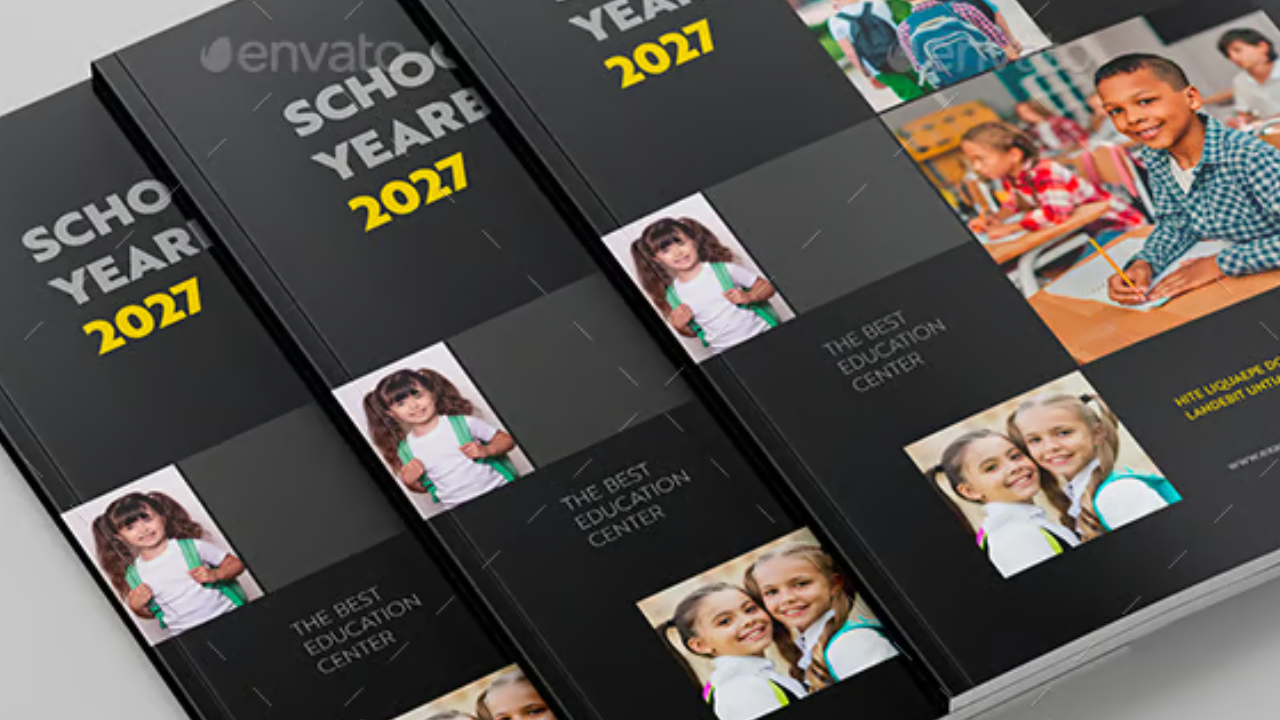Remember the smell of fresh ink, the weight of a hefty book in your hands, and the thrill of finding your picture? Yearbooks are timeless capsules of school spirit, friendships, and milestones. Yet, the process of creating them often felt stuck in the past: clunky software, endless spreadsheets, misplaced photos, and frantic deadlines leading to sleepless nights for dedicated committees. Yearbook360, a revolutionary cloud-based platform designed to drag yearbook creation into the 21st century, making it collaborative, creative, and remarkably efficient.
This guide dives deep into Yearbook360, exploring its features, benefits, and transformative power. Whether you’re a student journalist, a faculty advisor, a seasoned graphic designer, or a school administrator seeking a better solution, discover how yearbook360 redefines the journey from concept to cherished keepsake.
Introduction: Beyond the Glue Stick Era
Yearbooks are more than just books; they’re historical records, emotional touchstones, and celebrations of community. However, traditional creation methods – relying on isolated desktop software, physical photo collections, and manual coordination – are fraught with challenges. Version control nightmares, design limitations, communication breakdowns, and the sheer logistical complexity often dampen enthusiasm and compromise the final product.
Yearbook360 emerges as the antidote. It’s not just another design tool; it’s a comprehensive, cloud-based ecosystem built specifically for modern yearbook creation. It streamlines workflows, unleashes creativity, fosters collaboration, and offers flexible outputs from stunning printed books to interactive digital editions. This guide will walk you through everything you need to know to leverage yearbook360 for your next unforgettable yearbook project.
What is Yearbook360?
Yearbook360 is a specialized, web-based platform dedicated to simplifying and enhancing the entire yearbook creation process. Born from the need to overcome the frustrations of legacy methods, it integrates design, collaboration, content management, and production coordination into a single, accessible interface.
- The Problem It Solves: Traditional yearbook creation is fragmented. Design happens on one computer, photos are stored in another location (or scattered in emails), copy edits circulate via paper or disjointed digital files, and approvals get lost in inboxes. This leads to errors, delays, stifled creativity, and immense stress for advisors and students.
- Who It’s For:Yearbook360 is designed for:
- Schools (K-12 & Colleges): Yearbook committees, journalism classes, student councils, faculty advisors, and administrators.
- Design Teams: Professional graphic designers handling multiple school accounts or freelancers.
- Institutions: Clubs, sports leagues, and organizations needing professional-quality memory books.
- Tech-Savvy Individuals: Anyone wanting a powerful yet accessible tool for creating visually rich commemorative books.
Key Features of Yearbook360: Powering Your Creativity
Yearbook360 packs a powerful punch with features tailored to every stage of yearbook production:
- Intuitive Drag-and-Drop Design Interface: Forget complex menus. Easily place photos, text boxes, shapes, and graphics directly onto your canvas. Resize, rotate, and layer elements with simple mouse actions. This lowers the barrier to entry, allowing students with varying design skills to contribute effectively.
- Vast Library of Custom Templates & Themes: Jumpstart your design. Access hundreds of professionally designed templates categorized by style (modern, classic, thematic), event (sports, prom, graduation), and page type (candids, clubs, academics). Easily customize colors, fonts, and layouts to match your school’s unique identity.
- Real-Time Collaborative Editing: The heart of Yearbook360. Multiple users (students, advisors, designers) can work on the same page simultaneously. See edits happening live, leave comments directly on elements, and assign tasks. Eliminates the “who has the latest version?” panic.
- Cloud-Based Access & Auto-Save: Work from anywhere, anytime, on any device with a modern web browser. No software installation needed. Yearbook360 automatically saves progress continuously, protecting against lost work.
- Integrated Content Management System (CMS): A central hub for all your assets. Upload thousands of photos in bulk, organize them into albums (by grade, sport, event), manage student names and data, and store copy drafts. Drag assets directly from the CMS library onto your pages.
- Multimedia Integration (Beyond Print): Yearbook360 truly shines in the digital realm. Embed videos (highlight reels, event recordings), audio clips (student quotes, school songs), animated GIFs, and external links (to school websites, social media groups) directly into your digital yearbook pages. Create an immersive, interactive experience.
- Proofing & Approval Workflows: Streamline the review process. Send specific pages or the entire book for feedback. Stakeholders can mark up pages digitally, leave comments, and approve sections electronically. Maintain a clear audit trail.
- Seamless Printing & Digital Export: Once finalized, yearbook360 integrates directly with high-quality, professional printing partners. Specifications are handled automatically. Export your yearbook as a responsive digital edition viewable on any device (smartphones, tablets, computers) or as a downloadable PDF.
Benefits of Using Yearbook360 Over Traditional Tools: Why Make the Switch?
The advantages of adopting Yearbook360 are transformative:
- Massive Time Savings & Reduced Errors: Streamlined workflows, centralized assets, auto-save, and collaborative editing drastically cut production time. Automated name tagging tools (often integrated) reduce typos and mismatched photos. Fewer manual handoffs mean fewer mistakes.
- Unprecedented Collaboration: Breaks down silos. Students can work on club pages from home, advisors can review sports sections during planning periods, and designers can refine layouts – all concurrently. Fosters teamwork and shared ownership.
- Enhanced Student Engagement & Creativity: The intuitive interface empowers more students to participate meaningfully in design, not just content gathering. Access to professional templates and tools boosts confidence and unleashes creative potential. Students feel a deeper connection to the final product.
- Superior Design Outcomes: Professional templates provide a strong foundation. Easy customization tools allow for unique adaptations. Real-time collaboration enables rapid iteration and refinement, leading to a more polished, visually cohesive final yearbook.
- Eco-Friendly & Accessible Options: Digital yearbooks eliminate printing costs and environmental impact. They are easily shareable with alumni and families worldwide. Interactive elements create a richer, more engaging experience that static pages cannot match. Digital editions are also more accessible.
- Simplified Advisor Oversight: Advisors gain real-time visibility into progress, can monitor contributions, provide feedback instantly, and manage permissions easily. Reduces administrative burden significantly.
How to Use Yearbook360: Your Step-by-Step Roadmap
Let’s walk through the typical workflow:
- Setting Up Your Project:
- Log in to your Yearbook360 account.
- Create a new project. Name it (e.g., “Westfield High Yearbook 2025”).
- Define basic parameters: School year, target print/delivery date, book size, page count estimate.
- Select an initial theme or browse templates for inspiration.
- Building Your Team:
- Navigate to the “Team” or “Users” section.
- Invite members by email (students, advisors, photographers, designers).
- Assign roles and permissions (e.g., Editor, Designer, Photographer, Reviewer). Control who can edit, comment, or only view.
- Organizing Content:
- Access the integrated CMS/Dashboard.
- Create folders/albums (e.g., “Fall Sports,” “Senior Portraits,” “Band Concert”).
- Bulk upload photos. Use facial recognition or manual tools for student name tagging if available.
- Upload or draft copy text (section intros, club descriptions, event summaries).
- Designing Page Layouts:
- Open the page ladder view (overview of all book pages).
- Create a new page or spread.
- Choose a template or start blank. Drag your chosen template onto the page.
- Drag-and-Drop: Pull photos from your CMS albums directly onto photo placeholders or empty areas. Drag text boxes for headlines, captions, and body copy. Resize and position elements intuitively.
- Customize: Change colors, fonts, and backgrounds. Add shapes, lines, or clipart from the built-in library.
- Adding Multimedia (For Digital Editions):
- Select the element (e.g., a video placeholder, a button icon).
- Upload a video file or paste a YouTube/Vimeo link.
- Upload an audio file or link.
- Add a hyperlink to a website or social media page.
- Collaborating & Editing:
- Team members working on the same page see each other’s cursors and edits in real time.
- Use the comment tool: Click on an element, type feedback (“Needs a better action shot here,” “Check spelling of last name”).
- Assign tasks directly within comments (“@SarahP – Please find a photo of the chess club trophy”).
- Reviewing & Finalizing:
- Use the proofing mode to view pages without editing tools cluttering the view.
- Send pages or the entire book for review to specific individuals (e.g., Principal, Club Sponsor).
- Collect digital approvals and comments within the platform.
- Run automated spell-check and name verification tools.
- Perform a final high-resolution preview check.
Real-World Success Stories: Yearbook360 in Action
- Case Study: Lincoln Middle School – Engaging the Whole School:
- Challenge: Limited student involvement, advisor overwhelmed, missed deadlines, stale design.
- Solution: Implemented yearbook360. Created roles for students in every grade level (photographers, writers, designers for their grade sections). Used the CMS for photo submissions from teachers/coaches.
- Outcome: Student participation tripled. Real-time collaboration allowed the advisor to guide efficiently. Utilized video embeds for band performances. Finished on time with a vibrant, student-driven book. Advisor Quote: “Yearbook360 gave our students ownership. They weren’t just helping; they were creating. The collaborative tools saved me countless hours of chasing down updates.”
- Oakridge Academy – Professional Polish on a Budget:
- Challenge: Small private school lacking dedicated design staff. Previous books looked amateurish. I needed a cost-effective solution.
- Solution: Leverage Yearbook360‘s professional templates and intuitive design tools. A small committee (advisor + 2 parent volunteers + student editor) managed the project. Used the digital sharing option widely.
- Outcome: Achieved a sleek, cohesive design using customized templates. The cloud platform allowed volunteers to contribute flexibly. Digital distribution saved significant printing costs while reaching alumni globally. Parent Volunteer Quote: “The templates made it possible for us non-designers to create something we’re truly proud of. Yearbook360 made the process manageable and enjoyable.”
Yearbook360 Pricing and Access: Getting Started
Yearbook360 typically operates on a subscription model based on school size or specific project needs:
- Subscription Tiers: Often include Basic (small schools/clubs), Standard (most K-12), and Premium (large schools/colleges, advanced features) levels. Pricing scales with page count limits, number of users, and storage.
- Free Trials: Many providers offer a 14-30 day free trial, allowing committees to explore the interface and features risk-free.
- Educational Discounts: Significant discounts are usually available for accredited K-12 and higher education institutions.
- Support & Training:
- Comprehensive online knowledge base, video tutorials, and user guides.
- Dedicated email or chat support.
- Often includes onboarding webinars or training sessions.
- Some providers offer premium support packages.
(Note: Specific pricing details vary by the provider offering the yearbook360 platform. Always check the official website for the most current plans.)
Tips for Designing an Outstanding Yearbook with Yearbook360
Leverage the platform’s power with these best practices:
- Plan Your Story: Before designing, outline your book’s narrative. What’s the overarching theme? How do sections flow? Use Yearbook360‘s page ladder to map it out visually.
- Master White Space: Don’t cram pages. Use breathing room around photos and text for elegance and readability. Templates often handle this well – respect the spacing.
- Typography Hierarchy: Use headline fonts, sub-heads, body copy fonts, and caption fonts consistently. Templates provide a starting point – customize intentionally for impact.
- High-Quality Photos are King: Prioritize sharp, well-composed images. Use the CMS to organize ruthlessly. Blurry or dark photos undermine great design. Yearbook360‘s easy cropping/resizing helps optimize placement.
- Engaging Captions: Go beyond “Sarah at Prom.” Capture names, context, emotion, or a funny quote. Use the comment/collaboration tools to gather details from participants.
- Maximize Collaboration: Actively use the real-time editing and commenting features. Assign clear tasks. Encourage students to take ownership of specific spreads or sections.
- Embrace Multimedia (Digital): Don’t just add videos for the sake of it. Use them to enhance stories: a winning goal, a drama performance snippet, a teacher farewell message. Embed links to relevant school resources.
- Proof, Proof, Proof: Use the dedicated proofing tools. Have multiple eyes (students, advisors, other teachers) check names, spelling, dates, and faces. Yearbook360‘s automated checks are helpful, but human eyes are essential.
- Consistency is Key: Stick to your chosen color palette, font scheme, and design motifs (established in your theme/template) throughout the book for a professional feel.
Comparing Yearbook360 with Other Platforms
How does Yearbook360 stack up?
- vs. Traditional Desktop Publishing (Adobe InDesign, Scribus):
- Yearbook360 Wins: Built-in yearbook-specific tools (CMS, auto-layouts, name tagging), real-time collaboration, cloud access, integrated proofing/approvals, direct print partnerships, multimedia for digital. Lower learning curve for non-designers.
- Desktop Publishing Wins: Ultimate design flexibility for highly complex layouts, advanced typography control for experts, offline access (though a limitation for collaboration).
- vs. Generic Online Design Tools (Canva, Adobe Express):
- Yearbook360 Wins: Dedicated yearbook structure (page ladder, section management), robust student/staff database integration, advanced collaboration features designed for large teams, comprehensive proofing workflows, specialized yearbook printing integration, stronger multimedia interactivity for digital outputs.
- Generic Tools Win: Broader use cases beyond yearbooks, potentially simpler for very small, quick projects.
- vs. Legacy Yearbook-Specific Software (Often installed locally):
- Yearbook360 Wins: Cloud-based (access anywhere, no installs), real-time collaboration, modern intuitive interface, seamless updates, integrated multimedia for digital, often more competitive pricing/subscription models.
- Legacy Software Wins: Deep familiarity for long-time users, potentially offline access (though increasingly rare).
What Makes Yearbook360 Stand Out? Its singular focus on solving the entire yearbook workflow – from collaborative content gathering and intuitive design through streamlined proofing and flexible production (print + cutting-edge digital) – all within a unified, accessible cloud platform. It’s purpose-built for the unique challenges of school memory books.
Conclusion: Design Your Legacy with Confidence
The yearbook remains an irreplaceable tradition, a tangible piece of history. However, the process of creating it shouldn’t be a relic of the past. Yearbook360 represents the future: a future where collaboration is effortless, creativity is unleashed, deadlines are manageable, and the final product – whether a beautifully printed tome or an interactive digital experience – truly captures the spirit and energy of the school year.
It empowers students, supports advisors, delights administrators, and impresses the community. By modernizing your approach with yearbook360, you invest not just in a better book, but in a more engaging, efficient, and enjoyable experience for everyone involved.
❓ Frequently Asked Questions (FAQs)
- Q: What exactly is Yearbook360 used for?
- A: Yearbook360 is a cloud-based platform specifically designed for creating, collaborating on, and producing school yearbooks (and similar memory books). It handles everything from photo management and template-based design to real-time editing, proofing, and ordering printed books or generating digital editions.
- Q: Can students and teachers really collaborate at the same time?
- A: Yes! This is a core strength. Multiple users can be logged into the same project and actively working on the same page simultaneously. You can see edits happening in real-time, making teamwork incredibly efficient.
- Q: Does Yearbook360 allow adding videos and other interactive stuff?
- A: Absolutely, for digital yearbooks. You can embed video clips (uploaded files or YouTube/Vimeo links), audio recordings, animated GIFs, and hyperlinks directly onto pages, creating a dynamic, engaging experience beyond static print.
- Q: Is Yearbook360 accessible on phones and tablets, or just computers?
- A: As a web-based platform, Yearbook360 is accessible on any device with a modern internet browser – including desktops, laptops, tablets, and smartphones. Design work is often easiest on larger screens, but reviewing, commenting, and basic edits are very feasible on tablets and phones.
- Q: How do we actually start a project using Yearbook360?
- A: Typically:
- Sign up for an account/trial through the provider’s website.
- Create a new project, giving it a name and setting basic parameters.
- Invite your team members (students, advisors, etc.).
- Start uploading photos and content to the central library.
- Choose templates and begin designing pages using the drag-and-drop tools!
- Utilize the collaboration and proofing features throughout.
- Finalize and order prints or publish your digital edition.
- A: Typically:












